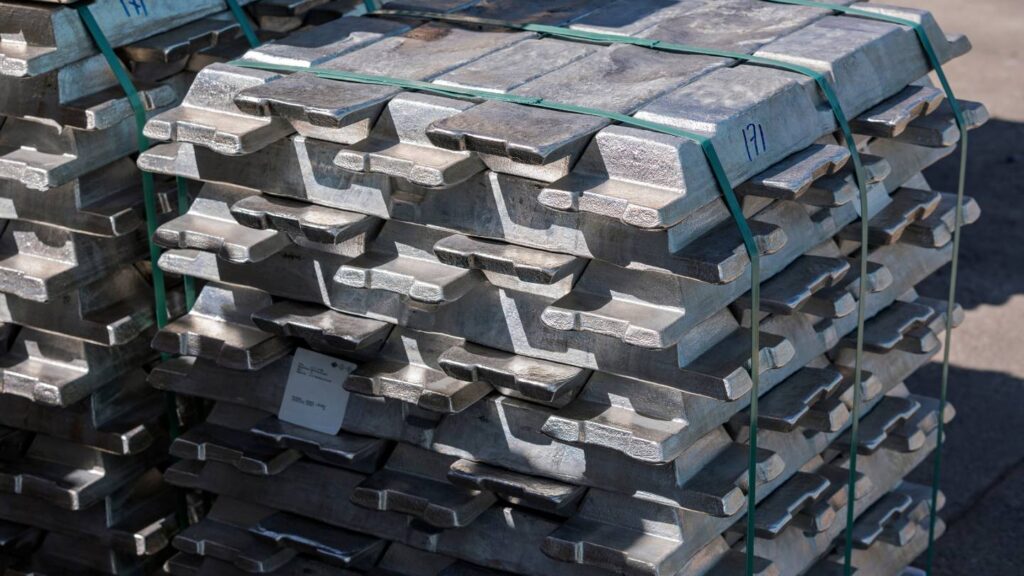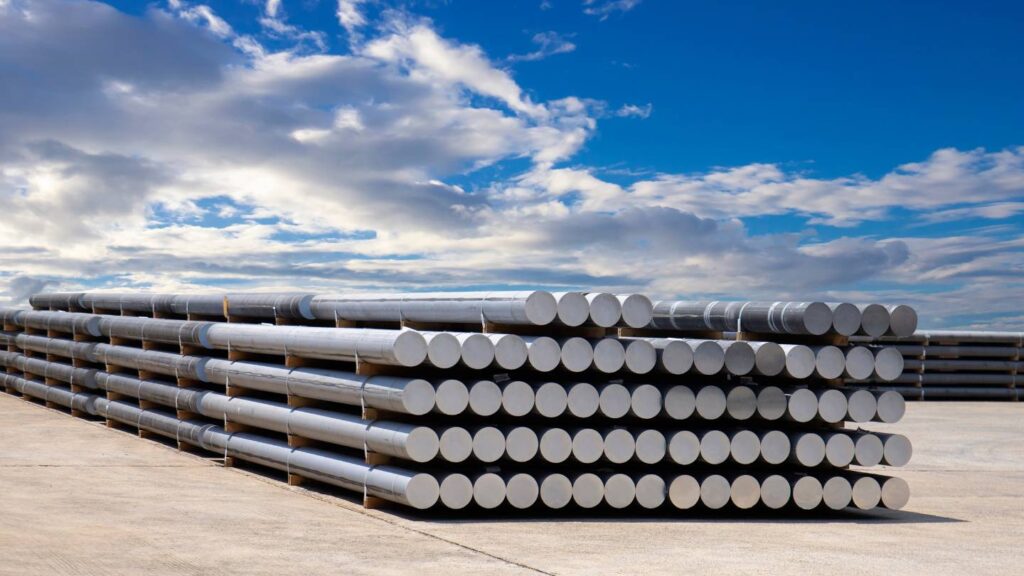The fabrication of sheet metal is a cornerstone in various industrial processes, spanning industries like electronics, construction, aerospace, and automobiles. Among the materials used in this sector, aluminium sheet metal stands out due to its versatility, lightweight properties, and durability.
As technology advances, so does the sheet metal fabrication industry, with innovative techniques continuously emerging to improve precision, efficiency, and overall product quality. This article delves into the most cutting-edge techniques revolutionising the aluminium sheet metal fabrication sector.
Let’s get straight to the point
The article discusses the advancements in aluminium sheet metal fabrication, emphasising its importance across various industries like aerospace, automotive, and construction. It covers the basics of sheet metal fabrication, which involves cutting and shaping metal sheets using techniques like cutting, bending, and welding.
The article highlights innovative techniques such as automation, 3D printing, laser and waterjet cutting, and robotic welding that improve efficiency, precision, and quality. It also addresses challenges like the need for skilled labor and balancing quality with cost while noting that ongoing technological advancements promise a bright future for the industry.

What is Sheet Metal Fabrication?
Sheet metal fabrication involves the process of cutting and shaping flat sheets of metal into various forms. This method is critical in producing components for a myriad of industries, including electronics, healthcare, construction, automotive, and aerospace.
The materials used in sheet metal fabrication range from steel, aluminium, copper, and brass to other widely utilised metals.
Processes Involved in Sheet Metal Fabrication
Common processes in sheet metal fabrication include cutting, bending, punching, and welding. These techniques allow for the precise shaping of metal sheets to meet specific design requirements. Various tools such as shears, lasers, and plasma cutters are employed to cut the sheet metal, while press brakes, rollers, and stamping machines are used for bending and shaping.
Benefits of Sheet Metal Fabrication
Sheet metal fabrication offers numerous advantages, making it a preferred method for producing both simple and complex components:
- Precision: Enables the accurate creation of intricate geometries.
- Lightweight: Ideal for industries like aerospace and automotive, where weight is a critical factor.
- Aesthetics: Provides flexibility in finishing options, including painting, polishing, and powder coating.
- High-Temperature Resistance: Suitable for applications involving extreme temperatures.
- Ease of Work: Sheet metal is malleable and can be easily welded and cut.
- Low Maintenance: Results in long-term cost savings due to reduced upkeep.
- Compatibility with Other Materials: Works well in hybrid constructions.
Innovative Techniques to Improve Productivity
In the quest to enhance productivity, the sheet metal fabrication industry has adopted several innovative techniques. These methods aim to streamline processes, reduce manual labour, and improve overall efficiency.
Automation in Fabrication
Automation has become a cornerstone in modern sheet metal fabrication. By incorporating automated systems, fabricators can expedite processes like welding, cutting, and bending, allowing human operators to focus on more creative and complex tasks. This shift not only speeds up production but also ensures consistent quality.
Lean Manufacturing Principles
Another significant innovation is the application of lean manufacturing principles. This approach emphasises the elimination of waste, optimising every step of the fabrication process. By reducing unnecessary steps, manufacturers can achieve shorter lead times, enhanced quality, and lower costs.
Advanced Software Integration
The integration of advanced software, such as CAD (Computer-Aided Design) and CAM (Computer-Aided Manufacturing), has transformed the design and manufacturing phases. These tools allow for the precise creation of complex parts with minimal effort, leading to improved accuracy and reduced production times.
State-of-the-art techniques in Aluminium Sheet Metal Fabrication
Recent advancements in aluminium sheet metal fabrication have introduced several cutting-edge techniques that significantly enhance the efficiency and quality of the fabrication process. Below are some of the most notable innovations:
3D Printing
3D printing, also known as additive manufacturing, has revolutionised the production of aluminium sheet metal components. This technique allows for the creation of complex shapes and structures that would be difficult, if not impossible, to achieve with traditional fabrication methods.
3D printing enables rapid prototyping and the production of custom components, significantly reducing lead times and offering greater flexibility in responding to market demands.
Laser Cutting
Laser cutting is a non-contact method that uses a high-powered laser beam to vaporise aluminium sheet metal. This technique offers several advantages over traditional cutting methods, including higher precision, reduced material waste, and faster cycle times. The ability to cut intricate designs and complex shapes makes laser cutting an excellent choice for producing unique components.
Waterjet Cutting
Waterjet cutting employs a high-pressure stream of water mixed with abrasive particles to cut through aluminium sheet metal. This method is advantageous because it can cut through multiple layers of material simultaneously, produces minimal material waste, and does not create heat-affected zones. Moreover, waterjet cutting is environmentally friendly, as it does not generate harmful byproducts or emissions.
Robotic Welding
Robotic welding has largely supplanted manual welding in the aluminium sheet metal fabrication industry. This technology offers superior accuracy, consistency, and speed.
By automating the welding process, manufacturers can produce high-quality components with fewer defects and shorter production times. Robotic welding systems are also highly adaptable, making it easy to reconfigure them for new designs.
Hydroforming
Hydroforming is a fascinating technique that uses hydraulic fluid to press aluminium sheet metal into intricate shapes and structures. This method allows for the mass production of lightweight, strong components with minimal waste. Hydroforming is particularly valuable in the aerospace and automotive industries, where complex shapes and strength are essential.
Electromagnetic Forming
Electromagnetic forming is a modern technique that uses electromagnetic fields to shape aluminum sheet metal. By placing the material around a coil and applying a high-voltage electric current, a magnetic field is created that rapidly deforms the metal. The benefits of electromagnetic forming include the ability to produce complex shapes with high accuracy and minimal material waste.
Advancements in Sheet Metal Fabrication Technology
The sheet metal fabrication industry is continuously evolving and driven by advancements in technology. New materials, such as advanced alloys and composites, are being developed to create components with enhanced strength and longevity. These materials are ideal for use in extreme environments where corrosion resistance and durability are critical.
Software and Automation
Advancements in software and automation are also transforming the industry. New software packages, such as those used in 3D printing, are making it easier to design and produce complex parts. As automation systems become more sophisticated, an increasing number of tasks can be automated, further enhancing efficiency and reducing production times.

Challenges and Opportunities in the Sheet Metal Fabrication Industry
Despite the many innovations in sheet metal fabrication, the industry still faces several challenges. Addressing these challenges is crucial for continued growth and competitiveness.
Workforce Skills
One of the primary challenges is the need for a skilled workforce capable of operating and maintaining advanced equipment. Investing in employee training and development is essential to ensure that the workforce can adapt to the rapidly changing technological landscape.
Balancing Quality and Cost
Maintaining high quality while reducing production costs and lead times is another significant challenge. Manufacturers must continually innovate and adopt lean manufacturing principles to stay ahead of the competition and meet customer expectations.
Opportunities for Growth
Despite these challenges, the sheet metal fabrication industry presents numerous opportunities for growth and innovation. As the demand for custom products increases and fabrication technologies continue to advance, manufacturers have the chance to expand their product offerings and capture new market segments.
The Future of Aluminium Sheet Metal Fabrication
Looking ahead, the future of aluminium sheet metal fabrication is bright, with even more cutting-edge methods and technologies on the horizon. These innovations will further enhance the industry’s ability to produce high-quality, complex parts with unprecedented efficiency.
Continued Innovation
The industry is poised for continued innovation, driven by the increasing demand for aluminium sheet metal components. As new technologies are introduced, manufacturers will be able to produce more sophisticated products, reduce production times, and improve overall quality.
Conclusion
Sheet metal fabrication is an essential process in numerous industries, from electronics and construction to aerospace and automobiles. The industry’s ongoing evolution is marked by the adoption of innovative techniques that enhance precision, efficiency, and product quality.
The introduction of 3D printing, laser cutting, waterjet cutting, robotic welding, hydroforming, and electromagnetic forming has revolutionised aluminium sheet metal fabrication, reducing production costs, improving accuracy, and shortening lead times.
As the industry continues to advance, overcoming challenges such as workforce skills and balancing quality with cost will be crucial. However, the future of aluminium sheet metal fabrication is promising, with ongoing innovations set to meet the rising demand for high-quality, complex components.
This dynamic and ever-evolving industry is poised to continue pushing the boundaries of what is possible in sheet metal fabrication.

